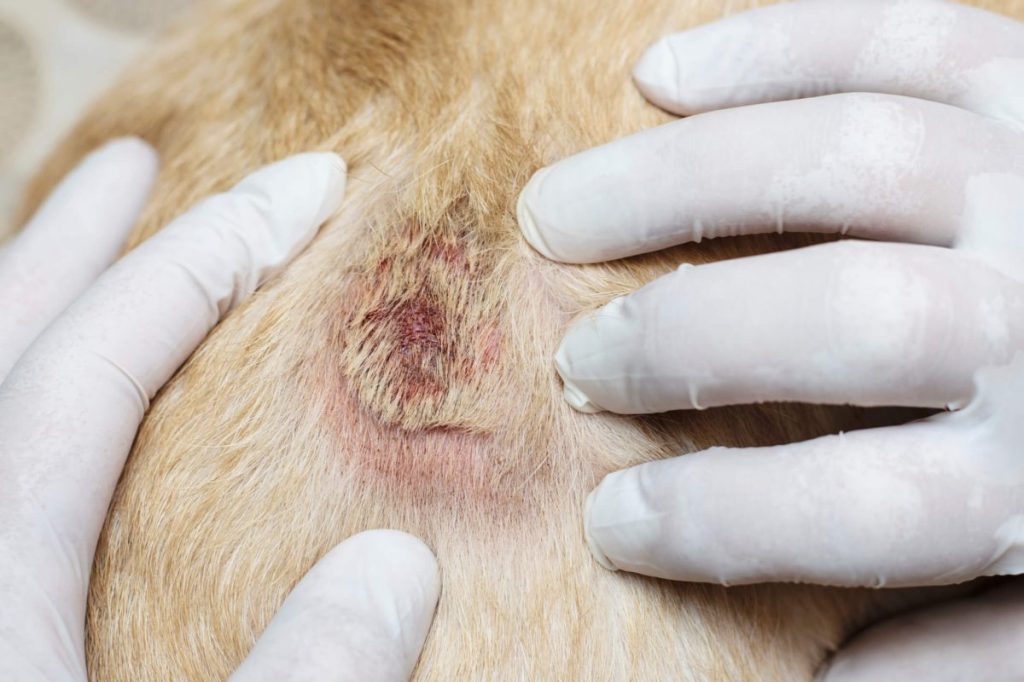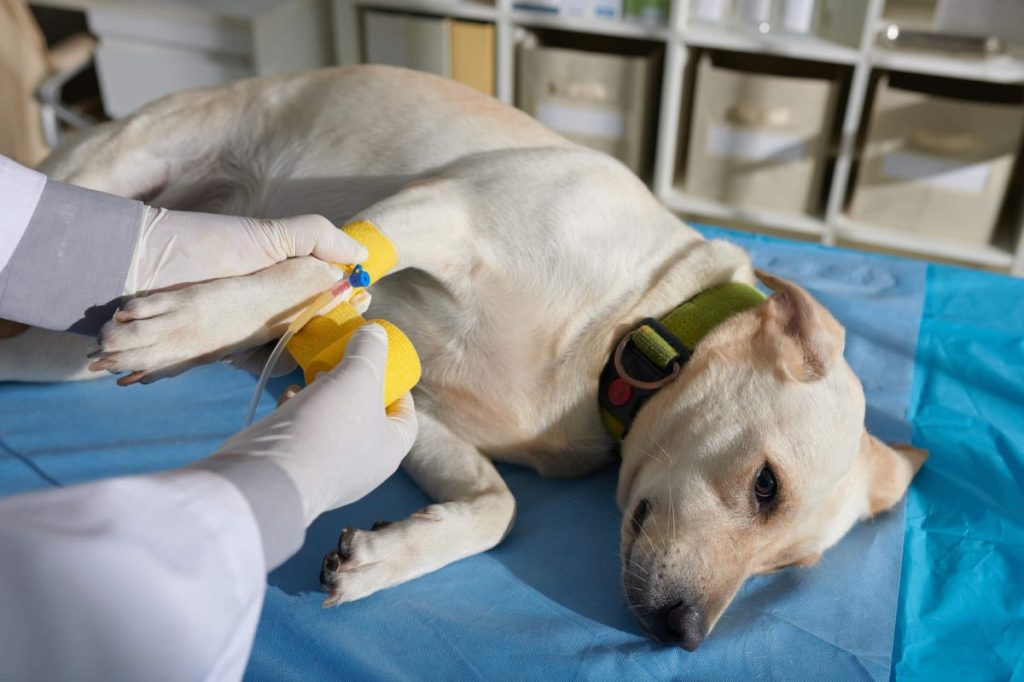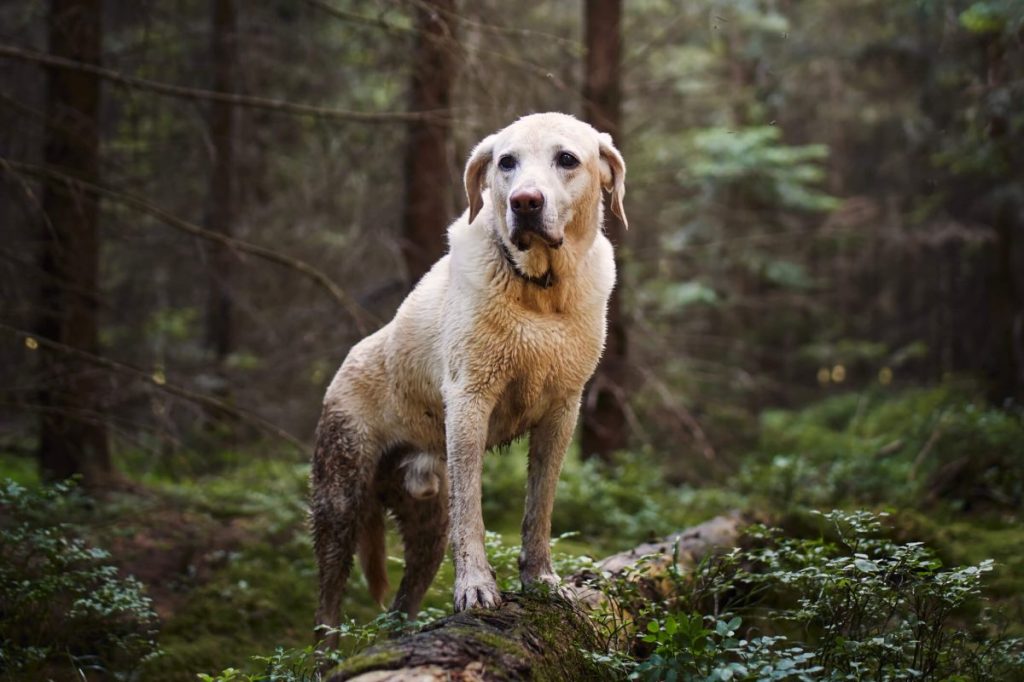Alabama rot is a rare but potentially fatal disease that affects dogs. Also known as Cutaneous and Renal Glomerular Vasculopathy (CRGV), this condition has baffled veterinarians due to its mysterious origins and rapid progression. It was first identified in Greyhounds in the United States in Alabama in the 1980s. Since then, it has been reported in various countries, particularly in the United Kingdom. The disease primarily targets the blood vessels in the skin and kidneys, leading to visible sores and, in severe cases, acute kidney failure.
Here’s what you should know about the symptoms, causes, and treatments of the disease.
Symptoms of Alabama rot in dogs

One of the first and most noticeable signs of Alabama rot in dogs is the appearance of skin lesions. These can manifest as ulcers, sores, or red areas — typically on the legs, paws, and sometimes the face, abdomen, or chest. They can vary in size and severity, often appearing as raised or inflamed areas that progress to open wounds. Since the sores may look similar to cuts, scratches, or even bites, they can be hard to initially identify.
As the disease progresses, acute kidney failure can occur within one to nine days following the appearance of skin lesions. Symptoms of kidney involvement include:
- Vomiting
- Reduced appetite
- Lethargy
- Increased thirst
- Frequent urination
Given the rapid progression from skin sores to kidney failure, timely intervention is of utmost importance. Unfortunately, due to the disease’s rarity and the nonspecific nature of early symptoms, it can be difficult for veterinarians to diagnose Alabama rot promptly.
If you notice any suspicious skin lesions or other signs of cutaneous and renal glomerular vasculopathy in your dog, take them to the vet as soon as possible. While most skin sores are not due to Alabama rot, they should still be evaluated to rule out other conditions.
During the vet visit, your veterinarian will likely ask about your dog’s recent activities and environments, examine any skin abnormalities, and may suggest monitoring kidney function through blood and urine tests. As of now, there is no specific diagnostic test for Alabama rot. According to The Kennel Club, the only definitive way to diagnose Alabama rot currently is by analyzing a kidney sample after the dog has passed away.
Causes of Alabama rot in dogs

The exact cause of Alabama rot remains largely unknown, despite ongoing research. However, researchers have a few theories. There is some evidence to suggest that the disease may be linked to environmental conditions. Many cases have been reported in dogs that have walked in muddy, wooded areas, especially during wet months. Despite this, experts from the Royal Veterinary College do not currently advise avoiding specific locations as the overall risk is very low. Some studies also indicate that bacteria, such as E. coli, or toxins in the environment may play a role.
While cutaneous and renal glomerular vasculopathy can affect dogs of any breed, age, or size, certain breeds appear to be more susceptible. These include:
Treatments for Alabama rot in dogs

Due to the mysterious nature of Alabama rot, treatment is mainly supportive. This can include IV fluids to maintain hydration and kidney function, pain management, and antibiotics to prevent secondary infections. Moreover, proper care of the skin lesions is essential. Your vet may clean your pet’s wounds, apply antiseptic solutions, and possibly use bandages to prevent infection and promote healing. In severe cases, dialysis may be necessary to manage acute kidney failure.
Another treatment, called Therapeutic Plasma Exchange or plasmapheresis, has been used experimentally to treat Alabama rot in dogs. This procedure aims to filter the blood by removing harmful substances from the bloodstream. However, its efficacy is still under investigation.
Despite intensive care, the mortality rate for Alabama rot is high, with some studies suggesting that up to 90% of affected dogs do not survive. Nonetheless, there have been cases where prompt and aggressive treatment has led to recovery, so early intervention is critical.
Since Alabama rot is a rare disease, the chances of your dog contracting it are very low. The number of reported cases is minimal compared to the large number of dogs walked in the countryside daily. However, as a precaution, it’s wise to wash off all mud from your dog’s paws after wet and muddy walks, especially in wooded areas. It’s also important to monitor your pet’s skin regularly for any potential symptoms. Additionally, keep yourself updated about any reported cases of Alabama rot in your area through local veterinary clinics or pet owner networks.
Ongoing research by organizations like The Alabama Rot Research Fund and the Royal Veterinary College aims to better understand the disease and develop more effective treatments. Advancements in diagnostic techniques and treatment protocols will hopefully improve the prognosis for affected dogs in the future.









